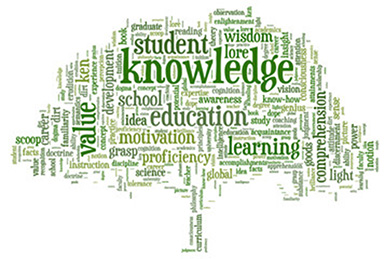Two higher education leaders share their experience fostering faculty engagement in online learning programs.

My anxiety about teaching used to be largely confined to staying up-to-date on the subject matter I was teaching and getting up to speed on applicable new learning technologies. In other words, apart from an overflowing trash can and a dirty whiteboard, I was largely in control of my teaching and learning environment. With that control came a certain comfort and contentment with my profession. It was 1999, and although the public university I served had a small contingent of renegade faculty members experimenting with online content delivery, they were few, far between, and certainly not officially supported by the institution.
As much as I liked incorporating new technologies into my courses, I was resistant to online education. I was skeptical about whether online education could produce good learning outcomes, and I recoiled at the thought of a technology that began to remove familiar elements of teaching from my control. Indeed, it became clear that since I did not possess all the competencies required to develop a good online course, I would also have to open my teaching environment to "outsiders" like instructional designers and multimedia specialists. But at least online courses allowed me to maintain some control over the course information through synchronous teaching elements.
So, as a dean, I knew it would foster anxiety among the faculty when it was announced that we were going to begin converting synchronous online courses to a completely asynchronous format. The conversion began summer 2017, with a go-live date of spring 2018. Quite expectedly, faculty comments included concerns about creating electronic correspondence courses, lowering course quality, and otherwise silencing the faculty voice in the teaching and learning process. Indeed, success with this new mode would depend on acknowledging the legitimacy of that fear and creating a process to encourage, respect, and retain the faculty voice. Our method of achieving this is anchored by five essential elements and will be applied to more than 250 courses, including general education, in nearly 20 academic programs.
This is our story and the essential elements to our approach. Each element below includes thoughtful communication, collaboration and planning.
A Thoughtful Launch

Start with transparency, stating clearly that the goal is to convert synchronous courses to 100% asynchronous offerings, and then focus on the tasks and faculty role. The goal should be communicated early and often to the faculty and staff impacted by the change. Faculty need to have buy-in and a voice in the process. We leaned on a shared governance taskforce to lead these efforts. The taskforce is empowered to drive the work and efforts with clear expectations of supporting the goal. For our work, the goal was to develop asynchronous online course offerings that were student centric in design. While there was not always a consensus about the process or steps, the taskforce's overall efforts aligned and supported this goal.
Guidelines and timelines are key to creating a vision for the outcome and accountability. One can look to current and effective practices in online program design and development. While institutions do not have to reinvent these guidelines, there may not be "off the shelf guidelines" that apply to the institution's culture or values. Timelines should support the process and, in some instances, create a sense of urgency.
Team Approach
A symbiotic relationship among an academic program director, content experts, and an instructional designer is essential. Developing and ensuring respect for each of the contributing team members can alleviate anxiety about the faculty's role. A memorandum of understanding to detail the responsibilities and contributing responsibilities can alleviate concerns. While faculty members are content experts, empowering instructional designers skilled in universal design and Understanding by Design practices can result in an engaging, student-centric online course and program.
Faculty Development and Support

Professional development and technology support are essential. While some faculty members are comfortable with the shifting role and highly engaged course facilitation, there may be varying levels of comfort and knowledge of effective practices. Faculty-led professional development can empower all faculty to embrace their new role.
Consider opportunities for faculty to experience asynchronous professional development. Model and convey that an asynchronous online environment does not equate to less faculty–student interaction; on the contrary, it can lead to an increase in engagement. The how, what, and when of engagement are key to supporting faculty development and ensuring a student-centric learning environment.
Focus on Teaching and Learning
As Einstein once said, "I never teach my pupils, I only provide the conditions in which they can learn." A strong focus on the online student population and creating ideal learning conditions can provide an engaging student experience. Most online learners are traditional adult learners: working adults, with varying computer expertise and access, life commitments, and competing priorities. Plan for these differences, present information in multiple formats, develop assessment options, ensure clear instructions, and create learning opportunities that are delivered 100% asynchronously. Engage faculty to consider the student demographics of their program and encourage faculty to create learning experiences that match the need.
Remember Assessment

Assessment opportunities support student learning and can be the standard that leads to program and course development changes. While assessment is listed last here, the focus on assessment should be at the forefront of the program design and delivery. Following the Understanding by Design Framework, curriculum is planned backwards, starting with the desired results or course learning outcomes. Assessment occurs often and checks to ensure that students are learning throughout the course and program. Learning is measured as progress and assessment results lead to iterative course and curriculum changes. Empower faculty to embrace authentic, real-world assessment. When students leave your institution, how will they convey their skills and knowledge? Faculty can integrate their expertise to develop innovative assessment strategies and validate them.
Shannon McCarty is AVP of the Center for Innovation in Learning at National University.
Daniel Donaldson is Dean of the School of Professional Studies at National University.
© 2018 Shannon McCarty and Daniel Donaldson. The text of this work is licensed under a Creative Commons BY-NC-SA 4.0 International License.
